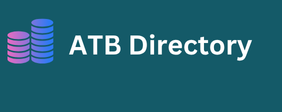Collecting and analyzing user data is a crucial step in creating effective dynamic content. By understanding your users’ preferences, behaviors, and demographics, you can tailor content to their individual needs and improve the overall user experience.
Data Collection Methods
- Website Analytics: Tools like Google Analytics can track user behavior, demographics, and website interactions.
- CRM Systems: Customer relationship Australia WhatsApp Number Data management systems can store customer information, purchase history, and preferences.
- Surveys and Feedback Forms: Directly collect user feedback through surveys, polls, and contact forms.
- Browser Cookies and Local Storage: Store user preferences and session data locally.
Data Analysis Techniques
- Segmentation: Group users based on shared characteristics, such as demographics, behavior, or preferences.
- Profiling: Create detailed profiles of individual users, including their interests, needs, and purchase history.
- Predictive Analytics: Use machine learning algorithms to predict user behavior and preferences.
- A/B Testing: Experiment with different versions of content to determine what works best.
Key Data Points to Collect
- Demographics: Age, gender, location, income level, education level.
- Behavior: Purchase history, browsing history, product preferences, time spent on site.
- Preferences: Interests, hobbies, lifestyle choices.
- Feedback: Customer reviews, ratings, and survey responses.
Ethical Considerations
- Data Privacy: Ensure compliance with data privacy regulations (e.g., GDPR, CCPA).
- Consent: Obtain explicit consent from users before collecting and using their data.
- Data Security: Implement robust security measures to protect user data.
Tools and Technologies
- Analytics Tools: Google Analytics, Adobe Analytics, Matomo
- Customer Relationship I couldn’t find a publicly Management (CRM) Systems: Salesforce, HubSpot, Zoho CRM
- Machine Learning Libraries: TensorFlow, PyTorch, scikit-learn
- Data Warehouses: Snowflake, Redshift, Databricks
Best Practices
- Data Quality: Ensure that the collected data is accurate, consistent, and relevant.
- Data Governance: Establish clear policies and procedures for data collection, storage, and use.
- Data Security: Implement strong security measures to protect user data from unauthorized access.
- Continuous Improvement: Regularly review and update your data collection and analysis processes.
By effectively collecting and analyzing user data, you can create dynamic content that is highly relevant and engaging for your audience.
Would you like to delve deeper into a specific aspect of data collection and analysis?


